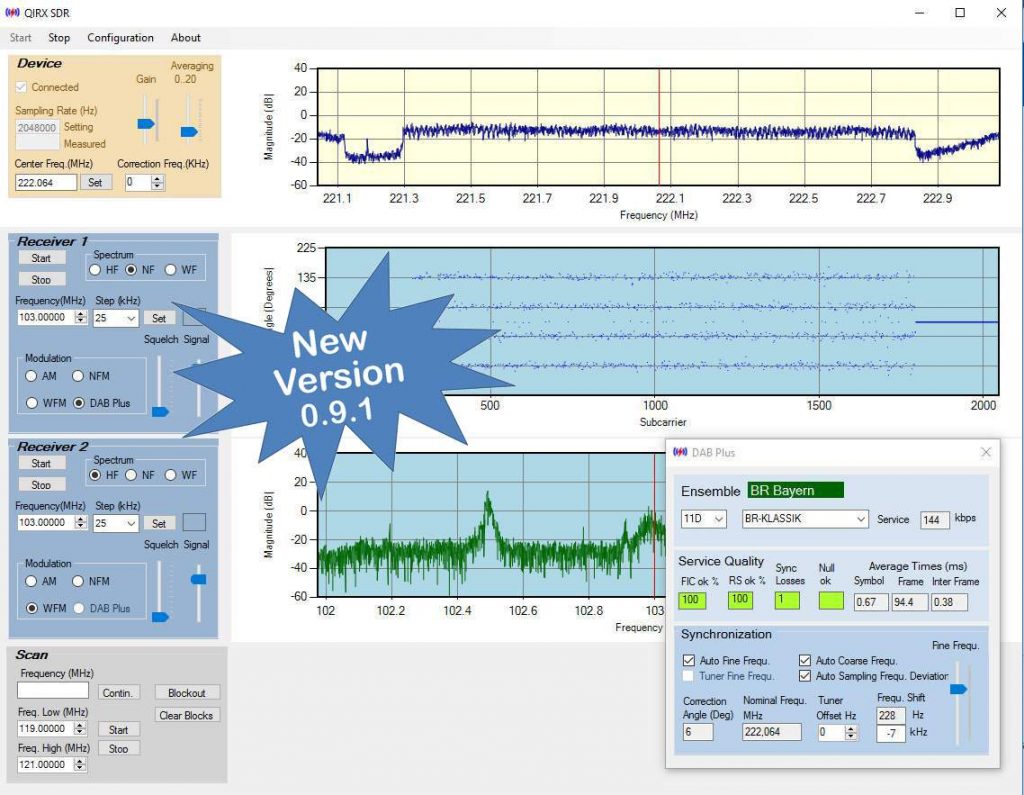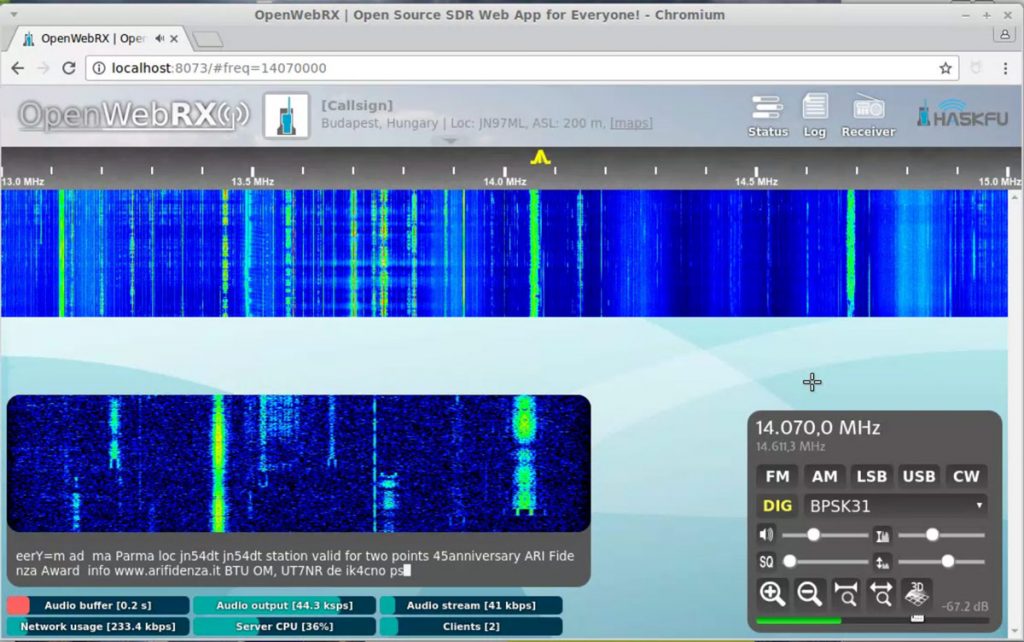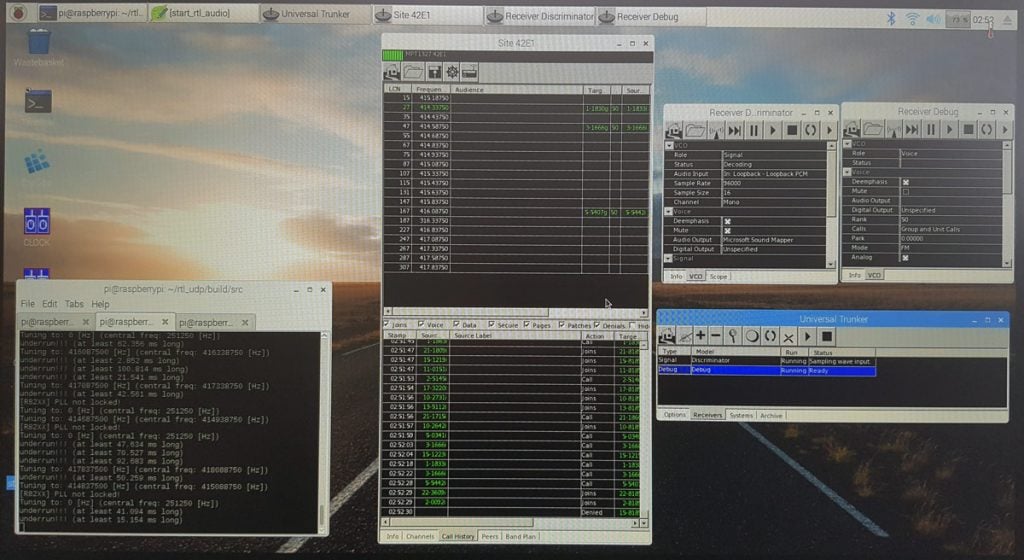QIRX SDR Updated: Legacy DAB, DAB Transmitter Identifications and more
Back in May of this year we posted about QIRX SDR, which back then was a brand new multimode SDR program compatible with the RTL-SDR. One of its defining features is that it has a built in DAB+ decoder. Recently QIRX SDR has been updated to version 0.9.1, the new features are quoted below:
General:
- Updated Documentation
- Device Frontend: Manual Center Freq. Correction in kHz
- Waterfall Spectrum
- Raw Recording: Playback Control, for a timed positioning (“seek”) in “arbitrary” large (GBytes) recorded raw files.
DAB:
- Legacy DAB, intended for users where DAB+ is not generally available, like in the UK or Spain. As this could only be superficially tested here in Germany (no standard DAB any more, I used some raw samples recorded in Madrid), I would be very interested in feedback of users about it.
- Synchronization of raw files recorded with central frequency offset
- Enhanced manual synchronization control, mainly for tests in mobile environments
- Detection of the Transmitter Identifications (TII). However, as this is a feature only useful for specialized applications, it is not included in the distribution. To my knowledge, qirx is the only DAB SDR having this feature.
Some Bug fixing.
The QIRX team have also added a new Quickstart Guide to help users get set up with their software quickly. In addition QIRX author Clem also writes that the QIRX software will be demonstrated during this weekends Ham-Radio fair in Friedrichshafen, Germany.


